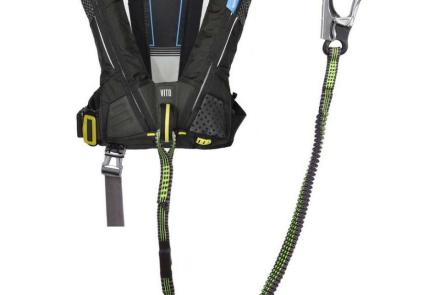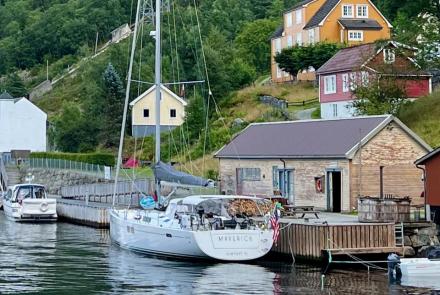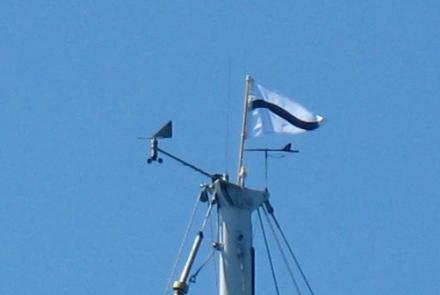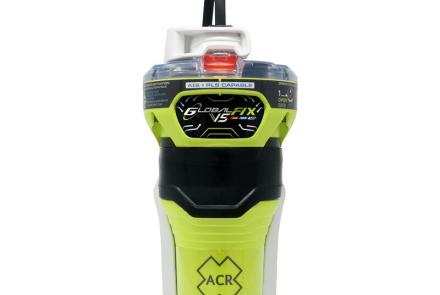Men and Ships Rot in Port
Disuse creates dysfunction
“From the CCA School of Hard Rocks
...lessons learned in pursuit of the Art of Seamanship”
By David Tunick, New York Station
“Men and ships rot in port.” So goes the adage, which applied in spades to the passage on my boat, Night Watch, from Amsterdam to A Coruña, Spain, in August, 2021. Practically every system aboard went down at one time or another, including the engine when we were still 300 nm from our destination.
Systems that failed in addition to the engine were transmission, stove, autopilot, battery charger, satellite communications, raw water, fresh water pump, and head. Even the new, stout, custom carbon fiber “pig stick” broke off at the top of the mast and almost impaled a crew member when, edged with multiple sharp spear-like points, it smashed into the deck an inch or two from where she lay.
Night Watch is a 1967 55-foot S&S custom aluminum yawl that I’ve owned for 38 years. She was re-powered with a new Yanmar 110 hp engine in 2009 that operated flawlessly through 2019, when the boat was hauled in the Netherlands for what turned out to be two years due to the pandemic. The engine required a rebuild in May 2021 after an incident at the boatyard, where the engine filled with rainwater that was not discovered for an estimated three months (don’t ask). The yard’s insurance provided for the rebuild, including a new alternator, new starter motor, new transmission, and new wiring.
Following the rebuild, the engine functioned perfectly in tests on land and on the first day on the water over a ten-hour period on the relatively placid, Dutch interior “seas”, the IJsselmeer and the Waddenzee. When we exited at IJmuiden not far north of Amsterdam into the bouncy North Sea, though, our troubles began, and it had nothing to do with the usual suspects: gunk from the fuel tank, air in the lines, or water in the fuel.
With the wind on the nose, it was a motor sail for the two-and-a-half-day delivery to Hamble, UK. We were on a tight schedule, often a precursor to trouble. The first difficulty manifested itself almost immediately: the engine would race from 2200 to 3000 RPM and then down to 1800. Bummer. Engine off, check the Racor for water (none), change fuel filter. Same thing again – race and slow – and a repeat of engine-off, inspections, etc. We found zero. We ultimately decided to stick to the old rule: If you’ve got engine troubles, but the diesel is running, don’t turn it off. So, we lived with the revving and slowing and made it to Hamble, UK, for long-planned electronic work and change of crew.
Once again out in the English Channel the engine functioned smoothly, except it was hard starting and the throttle/gear shift was abnormally stiff. We made our way at night through some fairly narrow, rocky passages off Ushant as we transited from the Channel into the Bay of Biscay and motor sailed south in light air. With a prediction for continuing lack of wind, we put into Camaret-sur-Mer in the northwest of Brittany for fuel. We would have loved staying for a day of sunshine and moules washed down by the local Muscadet, but already behind schedule, we left after an hour and a hasty, scant gastronomic purchase of fresh baguettes and cheese.
With enough wind to hoist full sail, we set a course that would avoid a predicted wind hole in the middle of the Bay of Biscay, a kind of mini-Azores High. The high, however, when it was supposed to go north, instead went east to precisely where we were. Rats - the iron genny once again had to be called into service. The usual routine ensued: engine switch on with consequent oil pressure alarm, a little preheat, then a push of the starter button. Nothing. Repeat - and repeat again. We checked the Racor. Checked everything. Hit the starter motor with a hammer. Jump the contacts on the starter motor. Measure voltage on the starter battery. Zero. Go to the emergency start procedure, which puts two of the four 6-volt batteries from the 24 volt service side into series and taps into the starter motor. Nothing. Finally we concluded that the new starter motor must have gone bad, and we gave up on the engine. No big deal: we’re on a sailing vessel, whereupon we drifted in no wind in a big circle for two days, which turned out to be relaxing if somewhat frustrating at the same time.
When the breeze finally filled in with a strong following breeze, we set the asymmetrical spinnaker and took off flying towards our destination: A Coruña, not far from Finisterre. The wind soon abated, though, and the GRIB files again showed dead spots in the Bay of Biscay, infamously known for the stormy opposite. We steered a longer, roundabout course in an effort to avoid the calms, making as much as six knots and as little as three knots, but as long as we were moving towards our destination, we were happy.
A few days later, a week after leaving England on what should have been a four-day delivery, we sailed into the harbor at A Coruña, rounded up, dropped sail, and were hip-towed by a dinghy with an outboard engine into the marina dock.
Two days later the owner of the Dutch yard responsible for the engine flooding with rainwater drove to Spain with parts and tools. The new starter motor was removed and a new starter motor installed. The engine still wouldn’t start. Battery trouble? We borrowed a starting battery from a nearby Swan 55. The engine still wouldn’t start, much less turn over. We removed the injectors and examined them - not the problem. Then we removed oil from the bottom of the engine oil sump, but instead of oil, we got clear water, five liters of it! We pumped out another ten liters of oil mixed with water. We filled the engine with fresh oil and pumped it out, again – and again. It was clean. The engine started immediately and ran without a flaw.
But we had to figure out how the water got into the engine. Could it have been through the PSS (Packless Sealing System) shaft seal hose? We traced the hose. It led to a spring-loaded Vetus loop hidden behind the electric panel. I did not know it was there – I, who pride myself on knowing my boat. What a terrible lapse: there was a hose I never bothered to identify or trace – in the nearly four decades I’ve owned the boat. Why is it there? We follow the bigger hoses that came out of the bottom of the vented loop, and they take us to the raw water system. Eureka! Raw water is pumped to the shaft seal to lubricate the shaft when the engine is turning the shaft.
But the question is, how come - suddenly, after seven years - did the engine suddenly flood with seawater? Our semi-professional, semi-amateur group are “certain” that a shaft seal within the PSS bellows has failed, and the raw water is getting in through the stern tube, a dangerous prelude to flooding and sinking. Later we find that the bellows and shaft seal are sound. I wondered if the cause was a stuck 25-cent spring in the Vetus loop, which would allow a reverse siphon to take raw water into the engine. I take the loop apart; the spring is fine. I get into it further, and Eureka! The vented loop had been pulled down, probably inadvertently but inexcusably, when the rebuilt engine was reinstalled. In fact, it was pulled down so far that it had descended to the waterline. We are all aware that vented loops must be well above the waterline – two to three feet is the standard recommendation - and as close as possible to midships.
All the other system failures turned out to be relatively easy fixes, if in some cases costly, but not hard to diagnose and cure. So, what was intended to be a fun delivery passage from the Netherlands to the Canary Islands turned out to be a 1,000 NM shakedown cruise that perforce had to be shortened to northern Spain. Once in port, I stayed for two weeks in order to fix all that had failed and remained unrepaired.
To say I enjoyed every minute of the experience would be a stretch, but I would not have wanted to miss a second of what was an extremely instructive month. Most importantly, it served to prepare the boat and me for an intended single-handed transatlantic next summer from Spain to Connecticut.
Lessons learned (or re-learned):
- Don’t cast off after a protracted lay-up and head right out to sea.
- If someone other than you has installed or repaired anything on your boat, make sure you know exactly what was done – and examine and inspect!
- Like your other equipment, know every hose in your boat, what each does, where it comes from, where it goes, and how it is meant to be installed.
- What can go wrong will go wrong.
The Cruising Club of America is a collection of passionate, seriously accomplished, ocean sailors making adventurous use of the seas. All members have extensive offshore boat handling, seamanship, and command experience honed over many years. “School of Hard Rocks” reports, published by the CCA Safety and Seamanship Committee, are intended to advance seamanship and help skippers promote a Culture of Safety aboard their vessels







